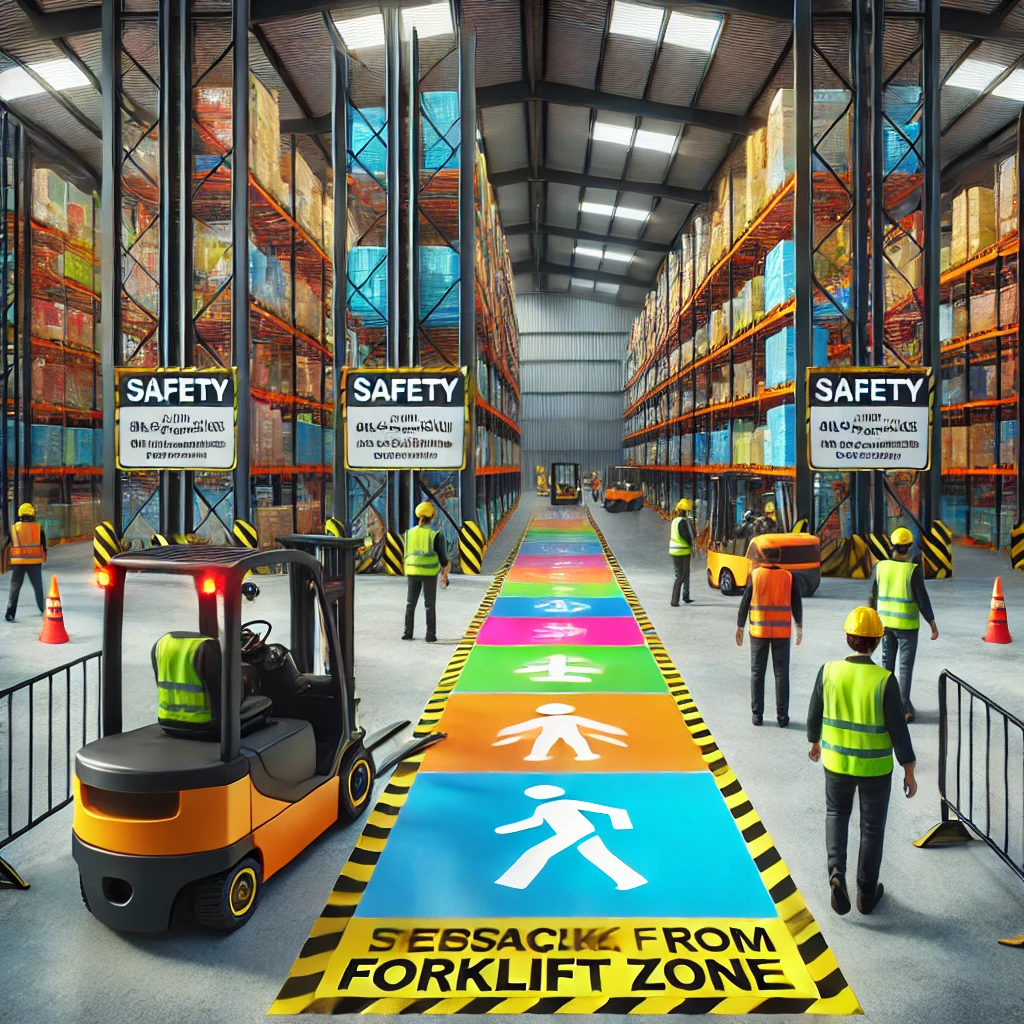
Transform Workplace Safety into a Productivity Booster
July 18, 2022
Boosting Workplace Safety: Essential Tools for Effective Lockout/Tagout Programs
July 18, 2022
Transform Workplace Safety into a Productivity Booster
July 18, 2022
Boosting Workplace Safety: Essential Tools for Effective Lockout/Tagout Programs
July 18, 2022In bustling industrial environments, safeguarding pedestrian safety is paramount. The coexistence of heavy machinery, such as forklifts, and constant employee movement creates a high-risk setting. However, by implementing strategies like clear signage, strategic traffic management, enhanced visibility, and attention to human factors, organizations can foster a safer workplace while ensuring compliance with health and safety regulations.
Signage: Guiding Safety at Every Step
Effective signage acts as the first line of defense against accidents. Properly placed, clear, and highly visible signs alert employees to hazards, guide them through the workplace, and ensure they stay informed about potential risks. This foundational safety measure not only reduces accidents but also ensures adherence to workplace safety standards.
Strategic Traffic Management: Keeping Paths Clear
Managing the interaction between pedestrians and heavy machinery is crucial. An efficient traffic management plan can drastically reduce risks by focusing on two primary areas:
- Segregation of Spaces: Establish designated zones for machinery and pedestrians using physical barriers like fences or brightly colored floor markings to minimize overlap.
- Speed Control: Enforce speed limits for equipment with the help of limiters and strategically placed signage to promote responsible operation.

Visibility: A Key to Collision Prevention
Visibility plays a crucial role in preventing accidents. Here are steps to improve visibility in industrial workplaces:
- Adequate Lighting: Remove dark spots by installing proper lighting to ensure all areas are well-illuminated.
- Barrier Maintenance: Keep barriers like fences and markings in excellent condition for clear visibility.
- Machinery Enhancements: Equip machinery with mirrors, vision panels, or cameras to assist operators in spotting pedestrians, especially in blind spots.
Addressing Human Factors: The Human Element of Safety
Human factors, such as fatigue and distraction, often go unnoticed but are critical contributors to workplace incidents. Mitigating these risks involves:
- Scheduled Breaks: Regular breaks help prevent fatigue and maintain alertness.
- Safety Training: Ongoing training sessions reinforce the importance of awareness and safe practices.
- Behavioral Monitoring: Proactively monitor worker behavior to address lapses and reinforce safety protocols.
Building a Culture of Safety
Achieving a safe industrial workplace extends beyond compliance; it requires fostering a proactive safety culture. By prioritizing clear communication, structured traffic management, enhanced visibility, and human factor considerations, organizations can dramatically reduce risks and ensure employee well-being.
For expert advice and tailored solutions in workplace safety products and signage, count on EZSecur. Learn more by visiting www.ezsecur.com.





